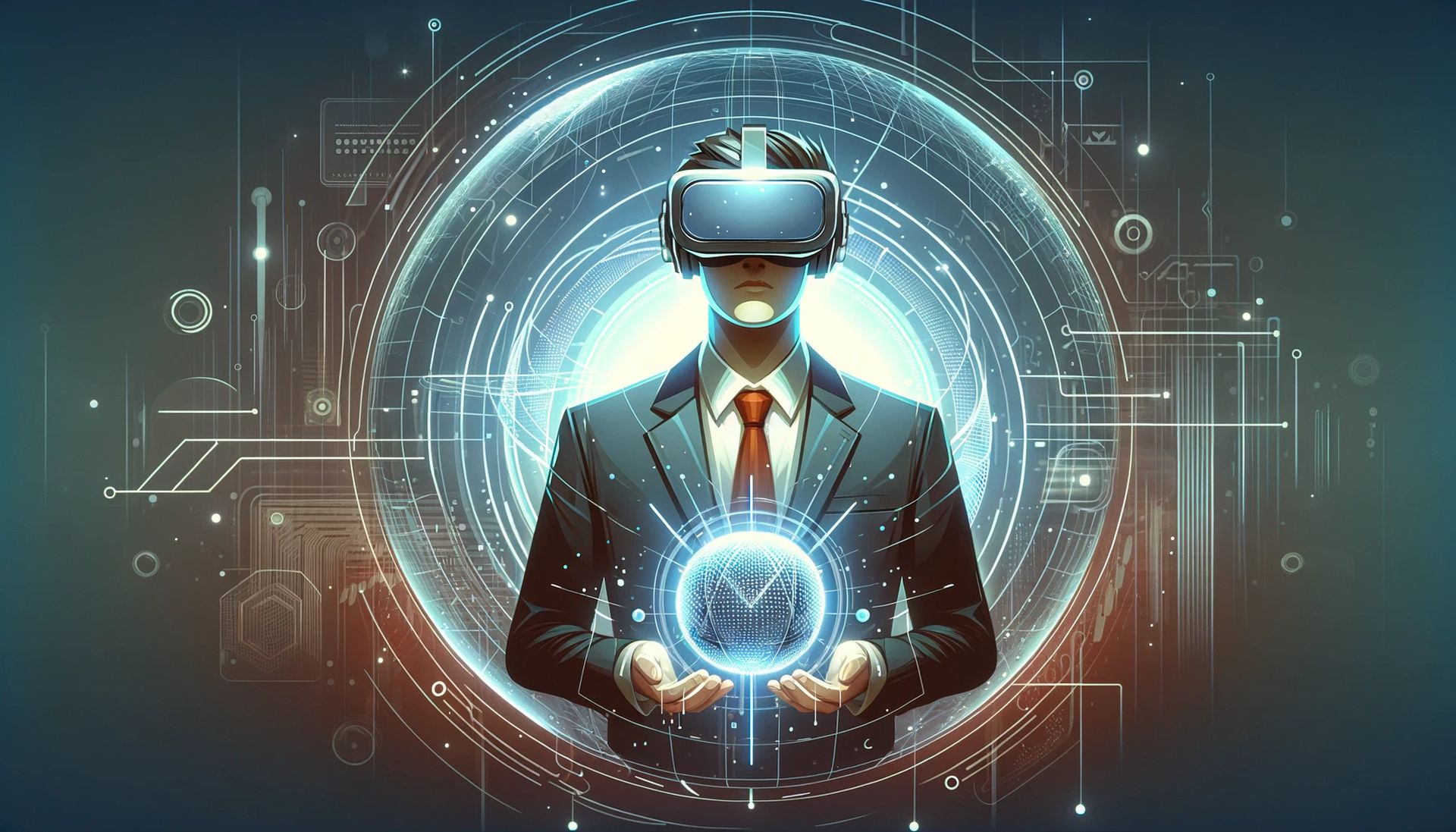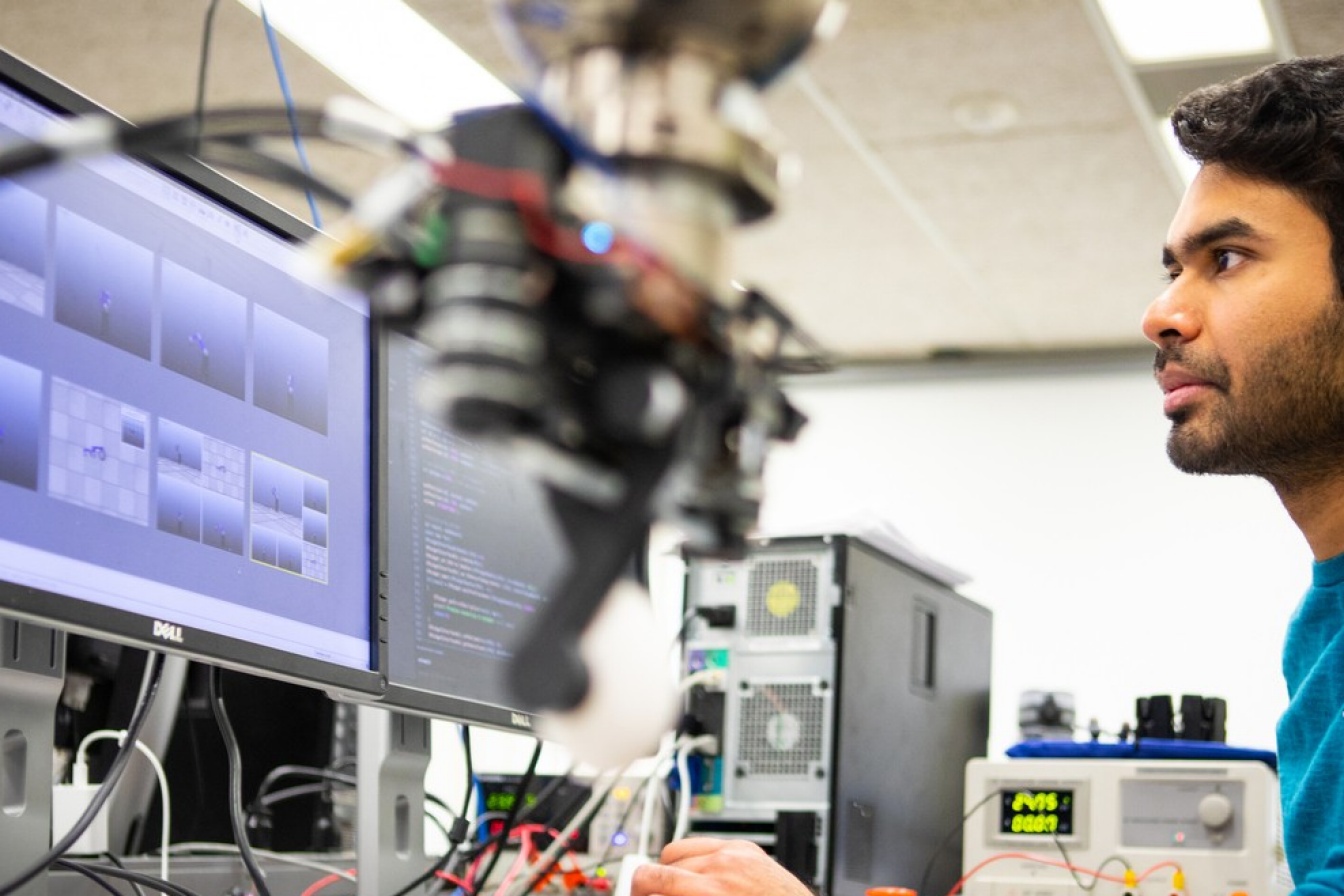“Spatial Computing: The Next Frontier of Human-Computer Interaction
Artikel Terkait Spatial Computing: The Next Frontier of Human-Computer Interaction
- NFT Marketplaces: A Comprehensive Guide To Buying, Selling, And Trading Digital Assets
- Web3 Brands: Pioneering The Decentralized Future Of Branding
- Lazy Minting: The Future Of NFT Creation And Accessibility
- Off-Chain Metadata: A Comprehensive Guide
- NFT Galleries: Showcasing Digital Art In The Metaverse And Beyond
Table of Content
Video tentang Spatial Computing: The Next Frontier of Human-Computer Interaction
Spatial Computing: The Next Frontier of Human-Computer Interaction

Spatial computing is an emerging field that is rapidly transforming the way we interact with technology and the world around us. It represents a paradigm shift from traditional computing, which primarily focuses on two-dimensional interfaces, to a more immersive and intuitive experience that seamlessly blends the digital and physical realms.
Defining Spatial Computing
At its core, spatial computing involves understanding and interacting with the physical environment in a way that allows computers to perceive, analyze, and respond to the world around them. This is achieved through a combination of technologies, including:
- Computer Vision: Enabling devices to "see" and interpret images and videos, allowing them to identify objects, track movement, and understand spatial relationships.
- Sensor Fusion: Combining data from various sensors, such as cameras, LiDAR, accelerometers, and gyroscopes, to create a comprehensive understanding of the environment.
- 3D Mapping and Reconstruction: Generating detailed 3D models of physical spaces, allowing devices to navigate and interact with the environment accurately.
- Artificial Intelligence (AI): Powering the algorithms that process sensor data, understand user intent, and generate appropriate responses.
- Extended Reality (XR): Encompassing augmented reality (AR), virtual reality (VR), and mixed reality (MR), XR technologies provide immersive interfaces for interacting with spatial computing applications.

Key Characteristics of Spatial Computing
Spatial computing is characterized by several key attributes that distinguish it from traditional computing:
- Spatial Awareness: The ability to understand and reason about the physical environment, including the location, shape, and properties of objects.
- Contextual Understanding: The capacity to interpret user actions and intentions based on their spatial context, allowing for more personalized and relevant experiences.
- Immersive Interaction: The use of XR technologies to create immersive and intuitive interfaces that blend the digital and physical worlds.
- Real-time Responsiveness: The ability to react to changes in the environment in real-time, enabling dynamic and adaptive applications.
- Ubiquitous Computing: The potential to integrate spatial computing capabilities into everyday devices and environments, making it a seamless part of our lives.

Applications of Spatial Computing
Spatial computing has the potential to revolutionize a wide range of industries and applications, including:
- Gaming and Entertainment: Creating more immersive and engaging gaming experiences, allowing players to interact with virtual worlds in a natural and intuitive way.
- Education and Training: Developing interactive and realistic training simulations for various fields, such as medicine, engineering, and manufacturing.
- Healthcare: Enhancing medical imaging, surgical planning, and rehabilitation through the use of AR and VR technologies.
- Manufacturing and Logistics: Optimizing warehouse operations, improving quality control, and enabling remote collaboration through the use of spatial computing tools.
- Retail and E-commerce: Creating more engaging shopping experiences, allowing customers to visualize products in their own homes and try on clothes virtually.
- Architecture and Construction: Improving building design, construction planning, and facility management through the use of 3D modeling and visualization tools.
- Transportation and Navigation: Enhancing navigation systems, enabling autonomous vehicles, and improving traffic management through the use of spatial data and AI.
- Robotics: Improving robot perception, navigation, and manipulation capabilities, enabling robots to perform complex tasks in unstructured environments.
Examples of Spatial Computing in Action
Several companies and organizations are already developing and deploying spatial computing applications across various industries. Here are a few examples:
- Microsoft HoloLens: A mixed reality headset that allows users to interact with digital content overlaid on the real world. It is being used in various applications, such as remote collaboration, training, and design.
- Magic Leap: Another mixed reality headset that focuses on creating immersive and realistic experiences. It is being used in applications such as gaming, entertainment, and education.
- Google ARCore: A software platform for building augmented reality applications on Android devices. It allows developers to create apps that overlay digital content on the real world using the device’s camera and sensors.
- Apple ARKit: A similar platform to ARCore, but for iOS devices. It allows developers to create AR apps that take advantage of the iPhone and iPad’s capabilities.
- Amazon Robotics: Develops robots for warehouse automation, using spatial computing technologies to enable robots to navigate and manipulate objects in complex environments.
- Waymo: An autonomous vehicle company that uses spatial computing technologies, such as LiDAR and computer vision, to enable its vehicles to perceive and navigate the world around them.
Challenges and Opportunities
While spatial computing holds immense potential, it also faces several challenges that need to be addressed:
- Technological Limitations: Current XR devices are still relatively bulky, expensive, and have limited battery life. Advances in hardware and software are needed to improve their performance and usability.
- Data Privacy and Security: Spatial computing applications collect and process vast amounts of data about the physical environment and user behavior. Ensuring the privacy and security of this data is crucial.
- Ethical Considerations: As spatial computing becomes more pervasive, it is important to consider the ethical implications of its use, such as the potential for bias, discrimination, and manipulation.
- User Adoption: Overcoming user resistance and ensuring that spatial computing applications are intuitive and easy to use is essential for widespread adoption.
- Standardization and Interoperability: Establishing industry standards for spatial data formats, APIs, and protocols is crucial for enabling interoperability between different devices and platforms.
Despite these challenges, the opportunities for spatial computing are vast. As technology continues to advance and the cost of XR devices decreases, spatial computing is poised to become a major force in the future of computing.
The Future of Spatial Computing
The future of spatial computing is likely to be characterized by several key trends:
- Increased Immersion and Realism: XR devices will become more lightweight, comfortable, and offer higher resolution displays, creating more immersive and realistic experiences.
- Improved AI and Machine Learning: AI algorithms will become more sophisticated, enabling spatial computing applications to better understand user intent and adapt to changing environments.
- Seamless Integration with the Physical World: Spatial computing will become more seamlessly integrated with the physical world, blurring the lines between the digital and physical realms.
- Ubiquitous Deployment: Spatial computing capabilities will be integrated into a wide range of devices and environments, from smartphones and smart glasses to cars and homes.
- New Applications and Use Cases: New and innovative applications of spatial computing will emerge across various industries, transforming the way we live, work, and interact with the world.
Conclusion
Spatial computing represents a significant leap forward in the evolution of human-computer interaction. By enabling computers to understand and interact with the physical environment, spatial computing has the potential to revolutionize a wide range of industries and applications. While challenges remain, the opportunities for spatial computing are immense, and it is poised to become a major force in the future of computing. As technology continues to advance and the cost of XR devices decreases, spatial computing will become more accessible and pervasive, transforming the way we live, work, and interact with the world around us. It is an exciting field with the potential to unlock new possibilities and create a more intuitive and immersive future for all.
